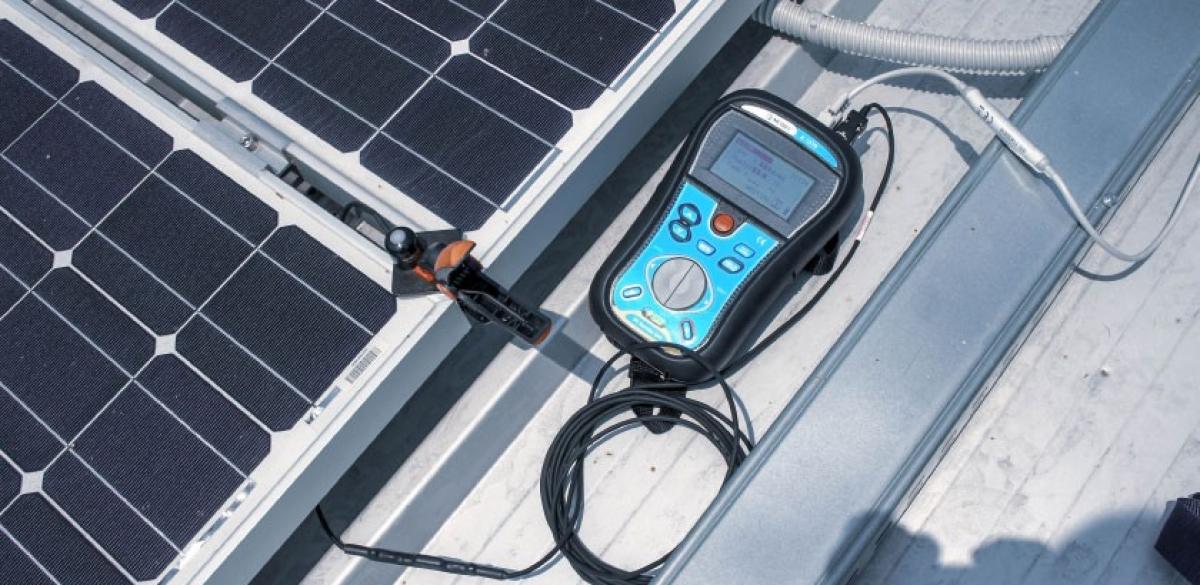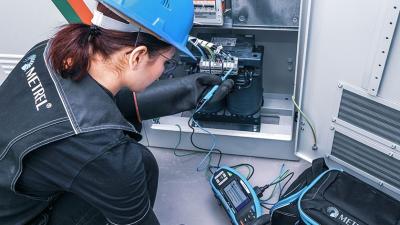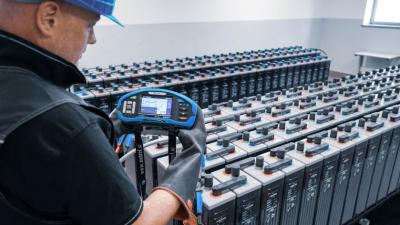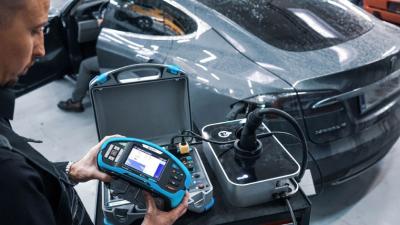Low voltage photovoltaic installations
Special locations

Installations at least partially powered by photovoltaic cells are ever more common, since they are considered environmentally low-impact. They can be used both in domestic and industrial settings. The installation, however, has cope with over and under production of energy.
Components - Photovoltaic system is composed of solar cell arrays and its supporting system commonly referred to as Balance of System, or BOS. It contains supportive structures, wiring, overvoltage protection, an inverter to convert the DC produced to AC voltage, and optionally a battery system, charge controller, a metering solution for returning power to the grid, maximum power point tracker, and other equipment for improving efficiency. All of these components need testing upon installation and then periodically. Generally, photovoltaic system needs little maintenance, but as with any electrical installation it is better to be on the safe. It is particularly hard to locate fault once they occur in large systems, so it is important to prevent them.
Construction - Each PV module produces insufficient voltage to be useful; therefore they are connected in series to form a string or array. Multiple strings are then connected in parallel to achieve desired power. A solar panel’s power can be measured under STC (standard test conditions) or PTC (PVUSA test conditions). Panels are typically designed to output 100 – 400 W. Together with wiring between the modules and arrays, they are packed into protective housing against the weather while allowing for best possible cooling and easy handling. High temperature and mechanical stress importantly lower the panel’s efficiency and longevity.
Efficiency - Efficiency of commercial solar panels by design was about 17% in 2019, and is expected to rise. There are however a large number of effects at work that can reduce it. The most obvious is shading. In the shaded cell, the electrons reverse direction through the p-n junction, while using the voltage from illuminated ones to break it down. This effect can suck up the energy from a number of neighbouring cells. Most panels are supplied with a diode to bypass the shaded current, cutting the losses to only the shaded portion. For tilted arrays, the rain is generally enough to keep them clean, but in dry and windy areas extra effort may be needed.
The absorption of energy is best when the panel is perpendicular to the sun rays. Tracking systems can be installed to boost it, but they add cost and require maintenance, and are therefore not common. Usually the fixed tilt is set for the rays to be perpendicular at noon. A number of other efficiency boosting techniques can be used, mainly connected to tracking system control and cooling. Part of successful energy transformation is also (usually software) management of surplus energy on sunny days.
Inverter - Inverter has to take the DC input from the solar panels and change it into sine, with frequency synchronized to grid frequency and amplitude limited to grid value. Disconnection from the
grid in case of an outage to prevent islanding is also managed in the inverter. Grid-connected inverters will use a technique to extract maximum power from the cells, called maximum power point tracking (MPPT). It comprises of digital sampling of the solar output and applying optimal resistance to the output. The algorithm and exact execution are usually proprietary. Typically inverters achieve 98% power efficiency.
Measurements
MI 3108 is a combination tester for installations safety and photovoltaics. Installation part covers the requirements of standard IEC/EN 61557. The photovoltaic part covers requirements of the standard IEC/EN 62446 and extra – I-U characteristic, STC values as required by IEC 61829 and power measurements on AC and DC sides. These measurements give an indication of panel health, its efficiency at given conditions, and (depending on the connections) locate the fault. Use safety probe for testing the high-voltage parts. High-quality thermal camera is a must for regular maintenance of solar panels. MD 9930 is possibly still short in terms of resolution for any large-scale facility, but can work for smaller home panels and for close-up inspection. It can be used to locate power losses due to overheating, weakened contacts and hot spots due to parasitic currents, and other faults on wiring and supportive systems. The images can also point to a new cooling design and other improvements.

















